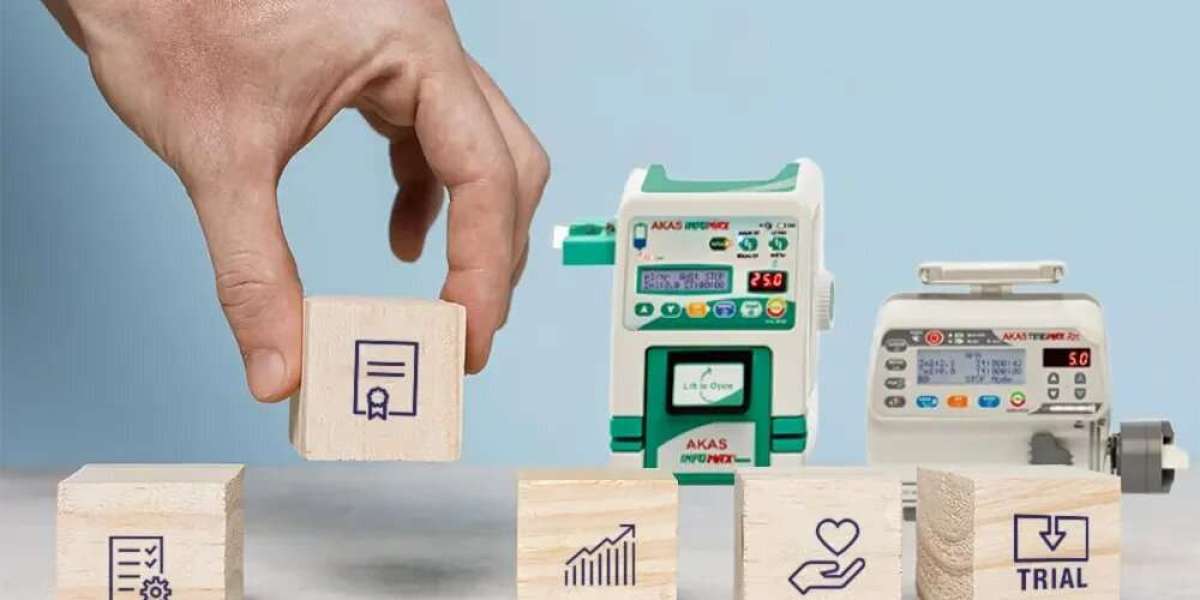Introduction
In modern healthcare, safety and precision are paramount. The Volumetric Infusion Pump has become a vital tool for delivering medications and fluids accurately to patients. However, its full value is only realised when care teams understand the built-in safety alarms. These alerts are not just audible warnings—they’re life-saving cues that protect both patient and staff. For hospitals, clinics, and healthcare centres, recognising these alarms and their implications is essential to ensure seamless and secure drug delivery.
Body Content: Safety Alarms and Their Significance
Each alarm within a Volumetric Infusion Pump serves a specific purpose and is engineered to alert staff to potential risks or process interruptions.
- Occlusion Alarm: Ensures Uninterrupted Flow
Detects blockages in the IV line.
Prevents over-pressurisation, tissue damage, or under-infusion.
- Air-in-Line Alarm: Prevents Air Embolism
Alerts when air bubbles are detected in the fluid pathway.
Critical in preventing potentially fatal air embolisms.
- Door Open Alarm: Ensures Equipment Is Properly Sealed
Activates when the pump door is not fully closed.
Stops operation until the door is correctly latched for safety.
- Low Battery Alarm: Maintains Infusion Continuity
Signals when battery life is critically low.
Prompts immediate attention to avoid treatment interruptions.
- Empty Container Alarm: Avoids Drug Delivery Errors
Indicates when the infusion bag or bottle is depleted.
Ensures timely replacement to maintain prescribed therapy.
- Rate Change Confirmation Alarm: Prevents Unauthorised Modifications
Requests confirmation when changes are made to the flow rate.
Protects against accidental or unauthorised dosage alterations.
- End of Infusion Alarm: Alerts Completion of Therapy
Notifies care staff when a programmed infusion has finished.
Allows timely disconnection or transition to next medication.
- Upstream Occlusion Alarm: Prevents Pump Damage and Therapy Disruption
Identifies blockages in the fluid source line.
Avoids mechanical strain and ensures consistent delivery.
- Pressure Limit Alarm: Avoids Tissue Trauma
Warns when line pressure exceeds safe thresholds.
Protects patients from vein or tissue damage due to excessive force.
- KVO (Keep Vein Open) Alarm: Signals Low-Flow Continuation
Notifies when the pump enters a low-rate maintenance mode.
Keeps the vein patent while avoiding unintended full-rate infusion.
- Tampering Alarm: Ensures Operational Security
Triggers when unauthorised access is detected.
Maintains device integrity and patient safety.
- Flow Rate Deviation Alarm: Monitors Dose Consistency
Alerts when actual flow deviates from programmed settings.
Flags potential calibration or mechanical issues early.
- Temperature Alarm (in certain advanced models): Protects Heat-Sensitive Medications
Detects when environmental or internal pump temperatures exceed safe limits.
Safeguards medication efficacy during infusion.
- Data Transmission Error Alarm: Ensures EMR Integration Integrity
Warns of disruption in communication with hospital systems.
Prevents gaps in digital documentation and patient records.
Why These Alarms Matter in Clinical Settings
- Protects Patient Life and Safety
Each alarm addresses a unique risk.
Timely response can prevent complications or even fatalities.
- Supports Nursing Workflow and Awareness
Alarms guide staff in prioritising urgent actions.
Reduces reliance on manual checks and enhances focus on patient care.
- Prevents Equipment Misuse or Failure
Early detection of issues preserves device performance.
Reduces costly downtime or emergency maintenance.
- Improves Training and Accountability
Familiarity with alarms aids quick response.
Promotes a safety-first culture across departments.
- Ensures Accurate Drug Delivery
Precision is critical in medication therapy.
Alarms reinforce dosage accuracy, especially in high-risk cases.
- Reduces Legal and Compliance Risks
Alarm logs serve as documentation for audits.
Proves adherence to safety standards and reduces liability.
- Enables Customisation Based on Patient Needs
Adjustable alarm thresholds support patient-specific protocols.
Enhances flexibility for complex clinical cases.
- Integrates with Smart Hospital Systems
Alarms can be connected to central monitoring.
Enables remote oversight and team-based rapid response.
Conclusion
In any hospital or healthcare facility, the value of a Volumetric Infusion Pump extends far beyond its technical features. Its safety alarms form an invisible shield—one that protects, informs, and empowers clinical staff every minute. Understanding what these alarms mean and why they matter is essential to safe and effective care.
Akas Infusion, currently the largest manufacturer, aims to become the global leader in Syringe and Infusion Pumps, delivering excellence that healthcare professionals can rely on. As the demand for precision and safety grows, so does the importance of knowing every sound and signal a pump makes.



